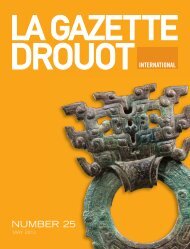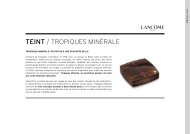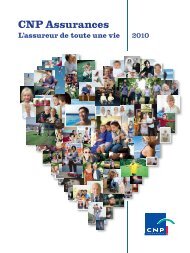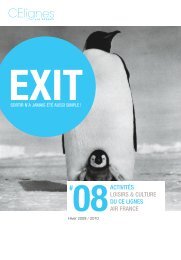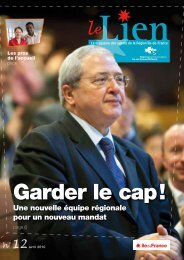Art Market Magazine - Visit zone-secure.net
Art Market Magazine - Visit zone-secure.net
Art Market Magazine - Visit zone-secure.net
Create successful ePaper yourself
Turn your PDF publications into a flip-book with our unique Google optimized e-Paper software.
© 2013 Museum Associates/LACMA and tricorne, Europe or United States, c.1870, beaver, bequeathed by Mrs Alice F. Schott M. 67.8. 204<br />
THE MAGAZINE EXHIBITIONS<br />
Suit, Spain, c. 1785, wool cloth, figured silk velvet,<br />
cotton serge background.<br />
100 GAZETTE DROUOT INTERNATIONAL I N° 23<br />
sensitive and eloquent touches. It also emphasises,<br />
notably in the 19th century, the incursion of a less<br />
cumbersome, more practical English fashion suited to<br />
an increasingly faster pace of life and the activities of a<br />
well-to-do population. In France, England, the<br />
Netherlands and the Iberian peninsula, the West<br />
recounts its conquests, divisions, advances and<br />
upheavals through its clothes. A cotton muslin dress<br />
from 1855 with airy flounces evokes the contribution of<br />
the Old World colonies. Colbert, as far back as the 17th<br />
century, analysed it all in visionary terms: "Fashions are<br />
to France what the mines of Peru are to Spain". As a<br />
melting pot of inventions and as a meeting point of<br />
influences, fashion also became the expression of<br />
Europe's fascination with an idealised East, as witness<br />
the chinoiseries of a full sack-back gown embroidered<br />
with pagodas and imaginary figures, and a close-fitting<br />
Banyan (man's dressing gown) in damasked silk – all<br />
imbuing the 18th century with a highly exotic freshness.<br />
Clothing time<br />
Clothing is a summary of custom and history that<br />
expresses the aspirations and innovations of a period in<br />
its own particular way. For example, during the slow<br />
wind-down of Louis XIV's reign, imagery reflecting the<br />
glory of the Sun King disappeared, giving way to a new<br />
taste and ornamental style that permeated the<br />
following century. The waistcoats of the aristocracy<br />
blossomed with colours; outfits sprouted rich decoration.<br />
An aesthetic based on the mix, drawing on both<br />
fantasy and reality, impregnated the structure, materials<br />
and patterns of silhouettes. Their narrative power<br />
became the spokesman and emblem of a changing<br />
society. To quote fashion historian Kimberly Chrisman-<br />
Campbell: "Fashions reflected the social history of a<br />
world transformed by revolution and industrialisation: a<br />
world clinging to an idealised past while opening out to<br />
modern technology." Because, marked by so many<br />
influences, clothing tells us a great deal. When a<br />
"polonaise" dress was delineated in three parts with its<br />
mantle, it was in fact referring to the first partition of<br />
Poland into three states, Austria, Prussia and Russia, in<br />
1722. Later, during the Revolution, the waistcoat was<br />
just as expressive. Like a gauge of opinion, it might refer





